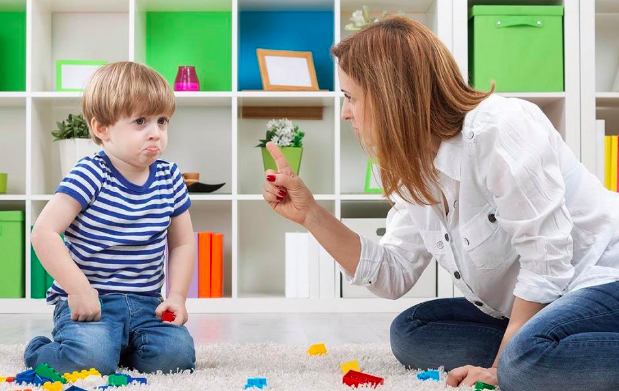Studies show that yelling is one of several discipline strategies that can actually make behavioral issues worse. Households with regular yelling incidents tend to have children with lower self-esteem and increased rates of depression. In addition, yelling loses effectiveness over time; a child who gets yelled at on a regular basis will start to tune the yelling out. Yelling isn’t a good strategy to help children resolve their problems. Below please find four alternatives to disciplining your child that do not involve yelling.
1. Examine the reasons why you are yelling
2. Discuss consequences ahead of time
3. Use storytelling to help teach children lessons
4. Follow through with consequences
Examine the reasons why you are yelling
If you find yourself yelling at your child, take a look at the reasons why. If you are yelling because you are angry learn strategies to calm yourself before taking your anger out on your child. Perhaps, try taking a time out for yourself in order to allow for the anger to subside. If you’re screaming because your child is not listening to you, find new strategies to get your child’s attention.
Discuss expectations and consequences ahead of time
If you explain to your child that there is TV after he puts his toys away. It’s up to your children to make good choices for himself. When you explain the negative consequences for breaking the rules ahead of time and then follow through on those consequences then your child is informed and you don’t have to use yelling to express yourself. Please note that every child is unique and some consequences work well for some children and not for others. It is always best to use positive language. Find the positive opposite of the behaviour you don’t like and emphasize the positive. Teachers have been doing this for years instead of “Don’t run in the hallway” We often hear teachers say “please use your walking fee!”
Use storytelling to help teach children lessons
As an alternative to yelling, Inuit people have throughout time utilized story telling to curb a child’s negative behavior. For example, if a child has misbehaved the Inuit people will tell a story or put on a play that asks the child to question his actions. If an Inuit child hits her brother than the Inuit mother may wait for the child to calm down and in a peaceful moment, put on a drama that will leave the child questioning her actions, making the child think about what she should’ve done. Using the Inuit approach to discipline, tell a story about your child’s behavior with a made up narrative. Use stuffed animals, puppets, or draw a “picture story!”. Then ask your child how he would change his behavior while using the story as a metaphor. This approach helps your child to build self-control on his own and teaches him strategies for handling difficult situations. .
Follow through with rewards and consequences.
Avoid repeating warnings again and again and promises that cannot be kept. . Instead, follow through with the consequence to show that you absolutely mean what you say. The word “Discipline” means “to teach”. Consistency in discipline and teaching is key to success without yelling.
Marilee Hartling RN, MFT | Infant & Child Development Specialist | Licensed Marriage and Family Therapist.


Recent Comments